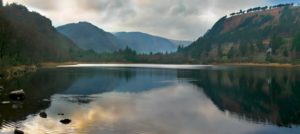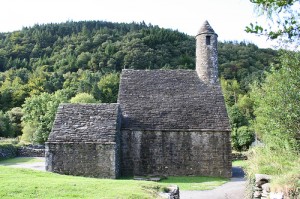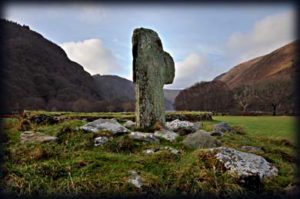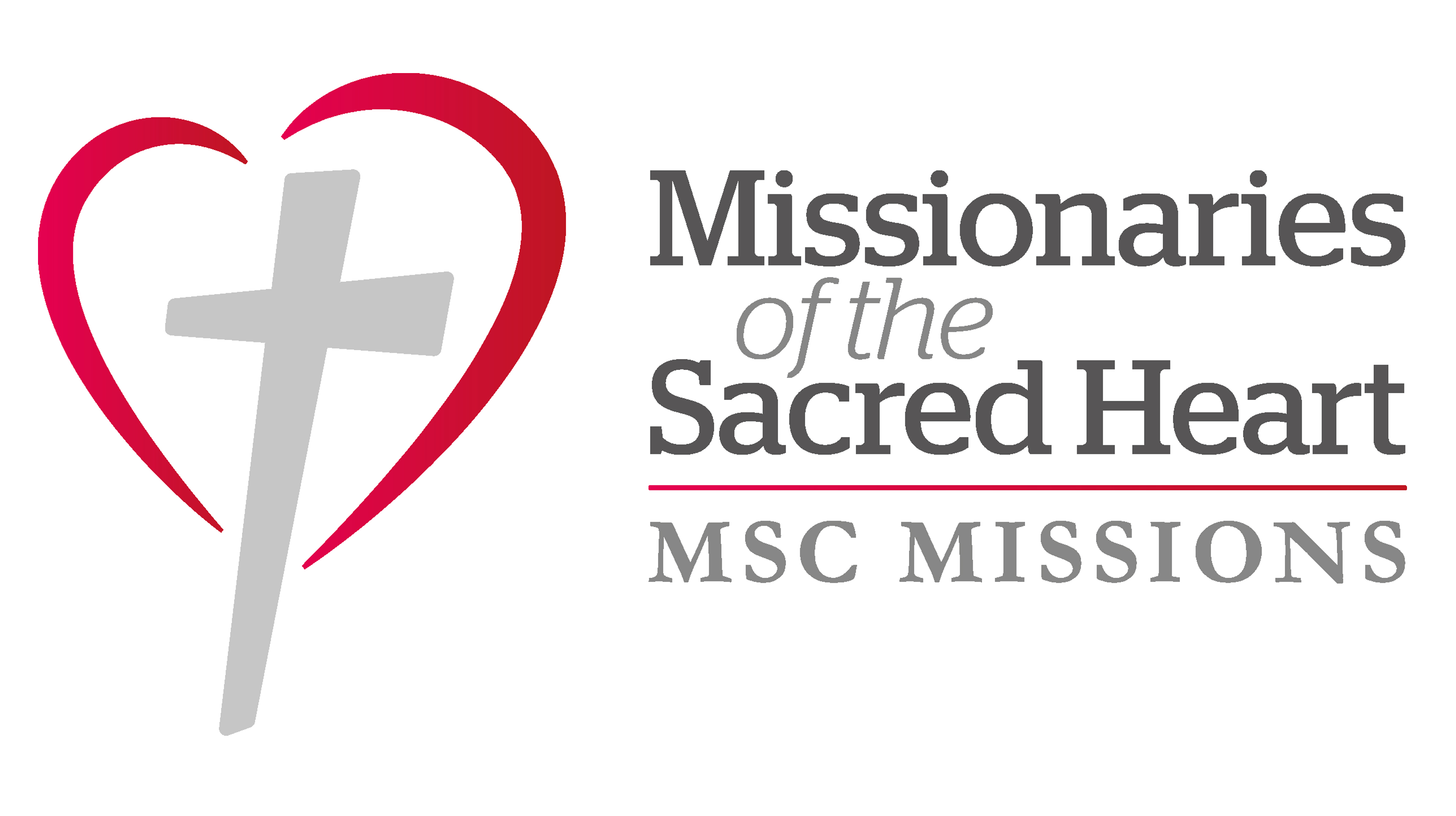The Story of St Kevin and Glendalough
 Even before Kevin arrived this was a spiritual place and there is good evidence that it was important in pre-Christian Ireland. Near the eastern shore of the Upper Lake is a bronze age stone fort or caher. Close to the main monastery site on land recently bought by the Government is a series of seven bullaun stones, known as the ‘the seven fonts’, large stones in which cup shaped depressions have been carved. Their purpose is unknown but is thought to be ritualistic in some way and they date to the bronze age or even earlier.
Even before Kevin arrived this was a spiritual place and there is good evidence that it was important in pre-Christian Ireland. Near the eastern shore of the Upper Lake is a bronze age stone fort or caher. Close to the main monastery site on land recently bought by the Government is a series of seven bullaun stones, known as the ‘the seven fonts’, large stones in which cup shaped depressions have been carved. Their purpose is unknown but is thought to be ritualistic in some way and they date to the bronze age or even earlier.
Kevin is said to have first arrived as a hermit, living on the shores of the upper lake in a small cave like place, now known as Kevin’s Bed, which was probably a bronze age tomb, though he later built a circular stone hut of which only a few stones remain – St. Kevin’s Cell.
The Founding of the Monastery
 In the mid-6th century the monastery was founded, by which time St Kevin was already revered and had a significant following. Little is known about the original monastery, which was probably in the area of the upper lake, but it quickly became a place of pilgrimage to which people flocked in numbers. This is probably why the settlement gradually moved to its current location at the lower lake, which is much more accessible.
In the mid-6th century the monastery was founded, by which time St Kevin was already revered and had a significant following. Little is known about the original monastery, which was probably in the area of the upper lake, but it quickly became a place of pilgrimage to which people flocked in numbers. This is probably why the settlement gradually moved to its current location at the lower lake, which is much more accessible.
By the end of the 8th century it was a large and thriving settlement, home to as many as 1000 people and famed as a centre of learning throughout Europe. The buildings which which survive today were all built between the 8th and 12th centuries.
The best known of these is the 110ft high round tower, which was built about 1000 years ago and used as a store and a refuge in times of danger.
 In the 11th century the small oratory (left), known as St. Kevin’s Kitchen, though I don’t know why as it was never a kitchen, was built near the lake. The Priest’s house, one of the most complete of the other buildings, is in the middle of the oldest part of the graveyard and was the area where priests and monks were traditionally buried.
In the 11th century the small oratory (left), known as St. Kevin’s Kitchen, though I don’t know why as it was never a kitchen, was built near the lake. The Priest’s house, one of the most complete of the other buildings, is in the middle of the oldest part of the graveyard and was the area where priests and monks were traditionally buried.
There would once have been many more buildings and there is a model in the visitor centre of what the settlement probably looked like at its zenith. It was known at one time as ‘the seven churches of Glendalough’, so was undoubtedly a very much larger place than it appears to-day.
An Enduring Place of Pilgrimage
From almost the beginning Glendalough’s powerful position in the Irish Christian world made it the target of attacks by those who feared its power, at first probably local chieftains, later the Norman English. It was attacked many times and its churches and houses were burned or broken, but each time it was rebuilt.
During the late 14th century Gaelic leaders in Wicklow had achieved considerable power and were perceived as a threat by the English ruler in Dublin. In 1398 the English attacked Glendalough and comprehensively destroyed it – bringing monastic life there to an end.
To-day some pilgrims still walk St Kevin’s way, an 18 mile way-marked route starting in the village of Hollywood and crossing the beautiful Wicklow Way before dropping down into the valley of Glendalough.

